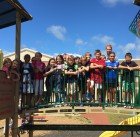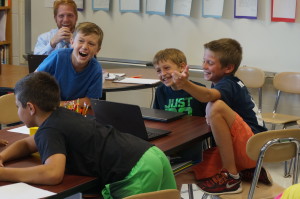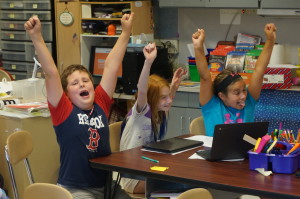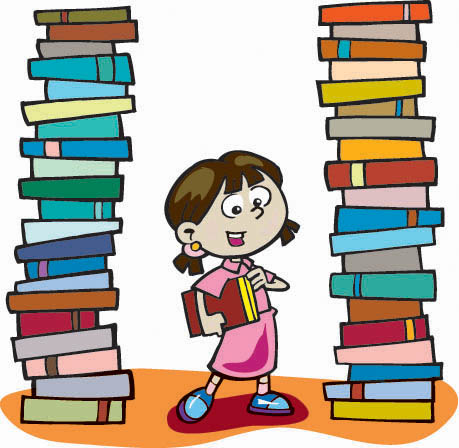Viewing: Readers’ Workshop
August 28, 2015

Happy Friday!
 We have started off the year with three terrific days in room 209! The start of school can be a challenging transition for students, and Mr. Walmer and I have worked hard to make our classroom a welcoming community for all 22 new fourth graders. Of course, we did the usual activities with learning classroom routines, students attended their first music, library, Spanish, and wellness classes, and we participated in our school’s traditional first day bell-ringing ceremony. I’d like to take the opportunity to share with you four other activities we’ve been working on this week.
We have started off the year with three terrific days in room 209! The start of school can be a challenging transition for students, and Mr. Walmer and I have worked hard to make our classroom a welcoming community for all 22 new fourth graders. Of course, we did the usual activities with learning classroom routines, students attended their first music, library, Spanish, and wellness classes, and we participated in our school’s traditional first day bell-ringing ceremony. I’d like to take the opportunity to share with you four other activities we’ve been working on this week.
Social Contract
In lieu of class rules, we have worked together to brainstorm ways we want to be treated. Specifically, students answered four questions:
- How do we want to be treated by our teachers?
- How do our teachers want to be treated by us?
- How do we want to treat each other?
- How do we want to treat each other when there is a conflict?
In answering these questions, students generated lists of ideas that describe how we should treat others in the classroom. Some words/phrases, such as “respectfully” and “fairly” appeared as answers to multiple questions, so these will likely be emphasized in our final social contract (which I hope to finish early next week). The social contract is a terrific resource, because we all hold one another accountable to fulfill what we agree to do (when we all sign it.) So if a student is, for example, disturbing others during a lesson, I can refer back to the social contract by saying something like “Hey, Timmy, when you signed the social contract, you agreed to be helpful. When you’re making funny faces, are you helping your classmates to learn? You also promised to be respectful to others. I’ve asked you a few times to focus on the lesson, and I noticed that your friend asked you not to distract her as well. Are you respecting your friend and me when you keep doing that?” Using the social contract helps students to adjust their choices and see why poor choices affect others negatively, rather than just “getting in trouble.”
Chromebooks and Google Classroom
I love using technology in our classroom when it allows students to interact or think at a deeper level, when it makes some of our classroom processes more efficient, or when it is a motivator to students. Yesterday, students got their first opportunity of the year to work on Chromebooks and to log into our Google Classroom page. Kids completed an exercise to prepare for our Two Truths and a Lie activity (see below), and today, students started writing letters to their future selves (at the end of this year) about their goals, predictions, worries, and hopes for the year to come. I’ll share a lot more information with you in the coming weeks, but in the interest of clarity please note that (a) students should always share their Google login information with their grownups at home, and (b) students should NOT be using their school Google email accounts at all right now.
Two Truths and a Lie
Yesterday, students wrote th ree statements about themselves in a Google Doc activity; two of the statements were true, and one was a lie. Last night, I imported those statements into a game environment called Kahoot, which creates a quiz game based on the content I import. We played this game this afternoon, and the kids really
ree statements about themselves in a Google Doc activity; two of the statements were true, and one was a lie. Last night, I imported those statements into a game environment called Kahoot, which creates a quiz game based on the content I import. We played this game this afternoon, and the kids really  enjoyed learning more about their classmates in a fun and unique way! Plus, the gameshow-like interface of Kahoot created a friendly competition in our classroom. We’ll definitely use this tool more in the future!
enjoyed learning more about their classmates in a fun and unique way! Plus, the gameshow-like interface of Kahoot created a friendly competition in our classroom. We’ll definitely use this tool more in the future!
Readers’ Workshop
Reading lessons started on Thursday! In fourth grade, our reading instruction is inspired by Readers’ Workshop, which is an instructional philosophy that the best literacy instruction is delivered in small bundles, with plenty of opportunity to practice skills as a whole class, in small groups, and individually. Our lessons started with an introduction to our classroom library and book bins, and continued today with a lesson about what silent reading should look like and sound like.
Alliterative Adjective Greetings
You may have noticed that your son or daughter came home on Wednesday with an assignment to think of an adjective that either starts with the same letter as his or her first name and/or with the same sound as his or her first name. Today, students greeted their classmates at their table groups with their nicknames, and we added some challenge by asking students to race to pass around a foam ball while greeting their table-mates, sometimes while skipping around!
Posted in Class Updates|By Jon Moss
September 18, 2014
Tonight’s Homework
 There are two assignments for tonight. The reading homework is to read the picture book that (hopefully) came home today.
There are two assignments for tonight. The reading homework is to read the picture book that (hopefully) came home today.
This morning, I read one of my favorite kids’ books: The Purple Coat. I modeled how a reader can think about the text while reading by putting my thoughts on post-it notes and putting them into the book. Later, I hand-picked 25 of my favorite kids’ picture books, and kids read through them in class and put in some sticky notes with some of their own thoughts. For homework, students chose a different book to bring home, read, and think about. The books already have some post-it notes in them from the “first round”, but I’d love kids to add more of their own thoughts on sticky notes tonight. Ideas for the sticky notes can include:
- predictions
- connections to the text
- inferences
- questions
- character observations
- reactions to events
- nearly ANYTHING else!
The math homework was something we “built” together at the end of the day. If your child did not get a copy, he or she can download it here.
Posted in Class Updates, Homework Assignments|By Jon Moss
September 3, 2014
Developing Life-Long Readers
 Our reading curriculum outlines the wide variety of skills that students are expected to master in fourth grade. But my overall goal is much more succinct: to develop talented, life-long readers. A 2013 Huffington Post poll found that 28% of U.S. adults hadn’t read a book in at least a year, which is a statistic that I hope to help change. Much of my reading instruction comes from an approach called Readers’ Workshop. In Readers’ Workshop, the focus is on explicit instruction, followed by small-group practice and then independent application. By transitioning from teacher-led to student-led learning, students are better able to develop and sharpen their skills, and I’m better able to work with students during small-group and independent time. Another pillar of Readers’ Workshop is the use of mini-lessons. Instead of spending an hour working on a broad skill, lessons tend to be shorter and focus on more discrete skills. This, too, allows students to focus their learning and gives them a better opportunity to more immediately apply (and reinforce) their new skills.
Our reading curriculum outlines the wide variety of skills that students are expected to master in fourth grade. But my overall goal is much more succinct: to develop talented, life-long readers. A 2013 Huffington Post poll found that 28% of U.S. adults hadn’t read a book in at least a year, which is a statistic that I hope to help change. Much of my reading instruction comes from an approach called Readers’ Workshop. In Readers’ Workshop, the focus is on explicit instruction, followed by small-group practice and then independent application. By transitioning from teacher-led to student-led learning, students are better able to develop and sharpen their skills, and I’m better able to work with students during small-group and independent time. Another pillar of Readers’ Workshop is the use of mini-lessons. Instead of spending an hour working on a broad skill, lessons tend to be shorter and focus on more discrete skills. This, too, allows students to focus their learning and gives them a better opportunity to more immediately apply (and reinforce) their new skills.
Because all the skills in the gr. 4 reading curriculum are based in the actual act of reading texts, our reading instruction, this week, has started with some basics. Our first minilesson focused on how to read independently (what independent reading should look like and sound like) so that readers can best think about what they are reading. Today’s lesson focused on how readers choose books (look for our exhaustive list tomorrow evening), and tomorrow we will answer a more general question: Why do we read? All of these help students to build strong fundamental skills that will make them more successful as we kick in with the more advanced skills down the road.
Posted in Class Updates|By Jon Moss
